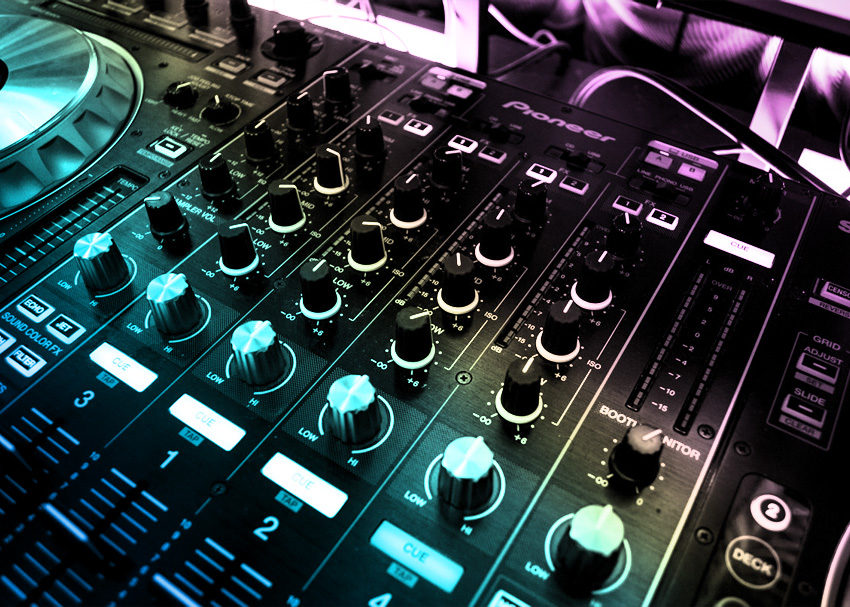So you want to become a DJ? There is more to it than just pressing play — a DJ must learn the techniques to properly mix songs and match beats. This series will cover the ins and outs of a DJ’s rig, providing you the basics and more to start building up your technique. The first thing to dive into, something I would argue as being one of the most important pieces of a kit, is the mixer. DJ mixers come in many shapes, sizes and forms, but they all serve the same basic purpose: blending multiple audio sources together. Here are some of the basic features of a mixer.
Key Features of a DJ Mixer
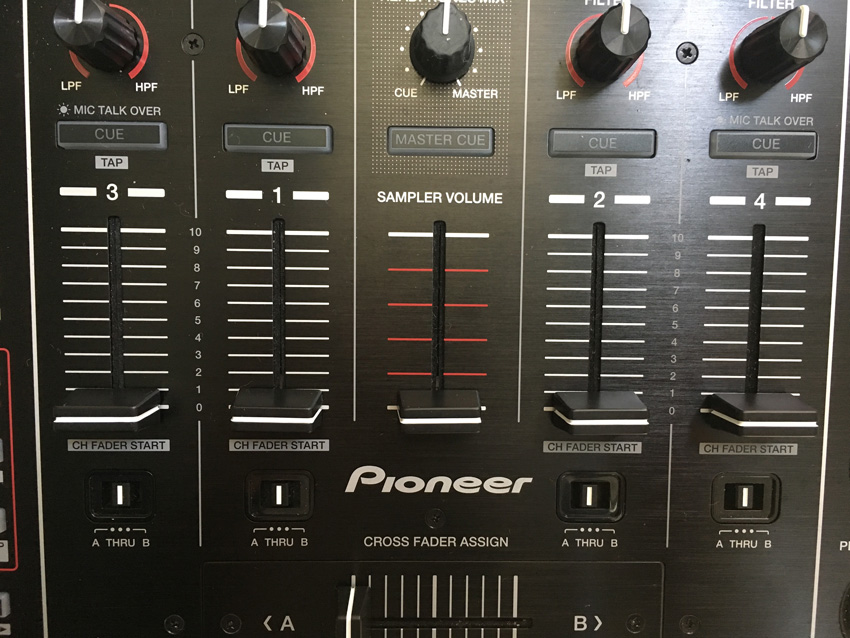
Channel Faders
- Channel Faders: The faders on a mixer are used to control the volume of each channel’s audio source. Most mixers will contain either two or four channels. Within each channel, you have your EQ, Gain, and routing options for the audio, just like they would be positioned on a traditional PA mixer.
- Cross Fader: This allows you to cut between channels on a mixer. In the time before digital controllers or CDJs, a DJ would rely on this to make quick cuts or transitions between songs.
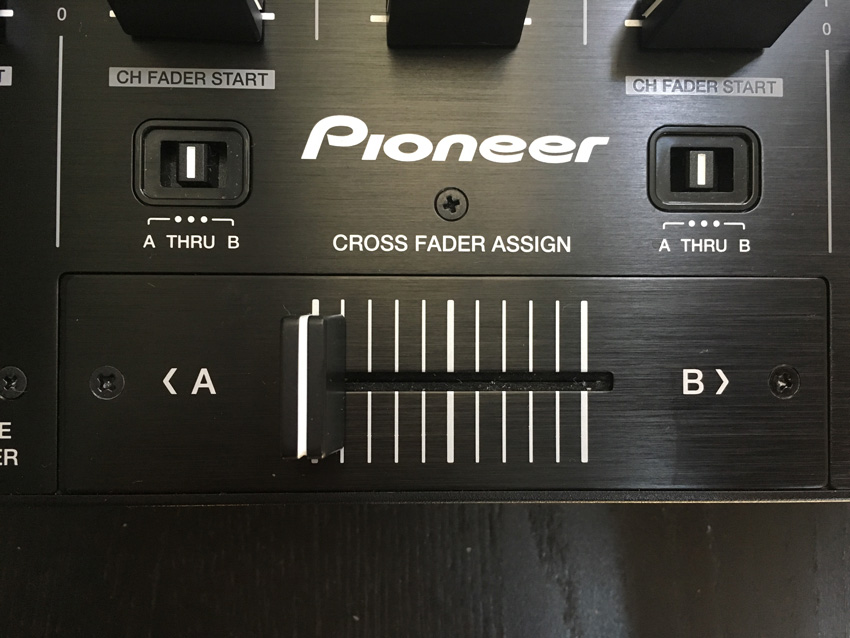
Cross Fader
- Master Fader: This is the control for the overall volume of the sum of all channels leaving the mixer.
- Equalizer Knobs: The equalizer section of the mixer is where you can really manipulate the tonal palette of the songs. This is usually a three-band EQ which would include bass, mid and treble. These knobs allow you to boost or cut volume in low, middle and high frequency ranges.
- Inputs and Outputs: This is the most straightforward section of the mixer, giving you access to your inputs from the turntables/CDJs and the outputs to the PA or your PA/booth monitors. On some mixers, you will see inputs for AUX and Phono. When you’re using turntables, you will need to use the phono inputs — they feature a preamp that will bring up the level of your sound to a normalized volume. The regular AUX inputs are placed on the mixer to receive line-level output from a CDJ or audio interface.
- Effects Section: This section will vary the most from mixer to mixer and company to company. For this example, we will focus on an industry-standard 4-channel Pioneer-style mixer. This section is generally found on the bottom right-hand section on mixers of this style. It will typically include echoes, reverbs, delays, spirals, low pass filters, high pass filters, and flangers/phasers. All of these effects will have a second knob to set and change parameters on the fly, as well an additional knob for selecting effects routing to different channels, the master channel and even your voice.
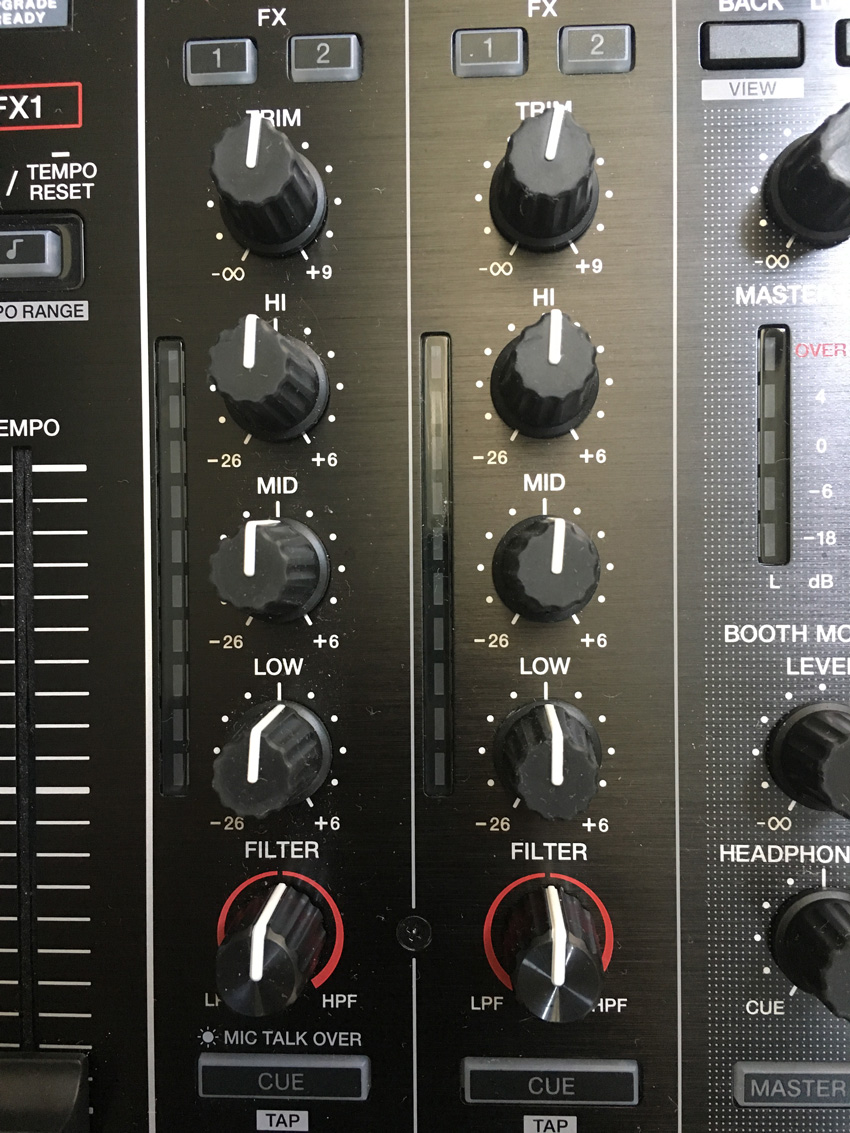
EQ and Filter Knobs
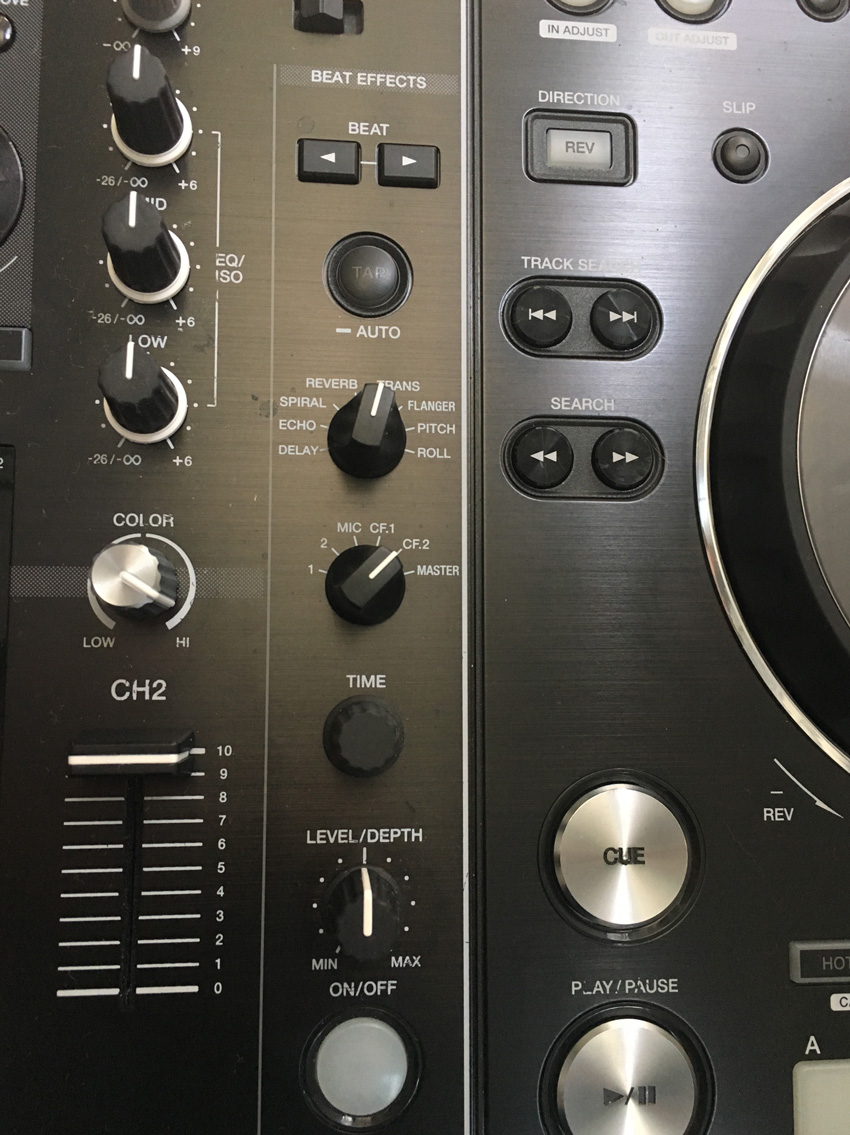
Effects Section
- Filter knob: This knob acts as a two-in-one High Pass Filter (HPF) and Low Pass Filter (LPF). It can be used to color the sound of the audio and can also be used to help scoop out some frequencies of your audio source during transitions and build-ups.
- Microphone: This feature of the mixer is similar to a microphone channel on a regular PA mixer. It generally features a gain knob and EQ section to tailor the sound of your voice.
- Additional Options: As you get into higher-end mixers, the additional features will continue to expand. Some of these features could include a booth output or additional master outputs. These can be used for monitoring your mix at a different volume or for recording a mix externally. Another feature on higher-end models would be a USB out for MIDI computer control or as an audio interface. On most Pioneer units, there is also an ethernet hub that can be used to link all of the CDJs together with the mixer. They can share information from USB drives or BPM information.
The mixer is one of the most important tools a DJ can use. Without one, you will not have a way of properly blending your multiple audio sources. And although they come in different shapes and sizes, the purpose of a mixer is always the same: to keep the dance floor moving.

